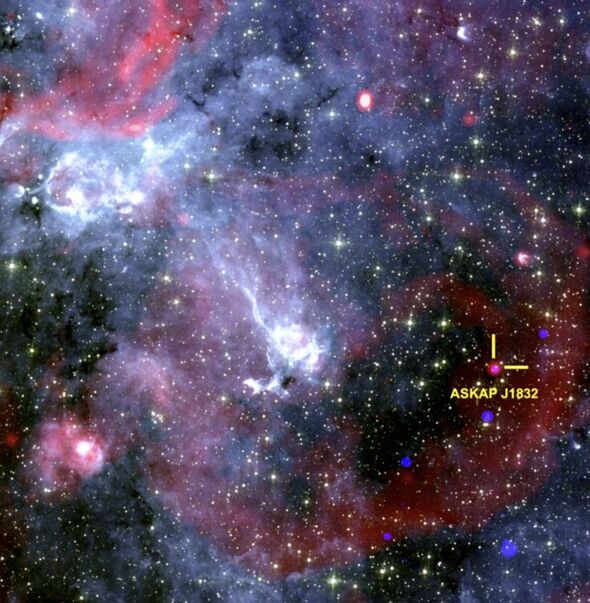Astronomers in awe over mysterious space object 'unlike anything seen before' in space
Astronomers have yet to explain the mystifying signals and their unusual intervals, but the team hopes their findings will provide insights.

Astronomers have recently uncovered an unprecedented celestial phenomenon concealed within our cosmic waves.
The mysterious object, situated merely 15,000 light-years from Earth in our Milky Way galaxy, unveiled itself to an international team of scientists when it was detected emitting astonishing pulses.
The object, named ASKAP J1832-0911, spits out pulses of radio waves and X-rays for two minutes straight, once every 44 minutes.
- US issues travel warning for country as Trump warns of white 'genocide'
- How a dad made a friend dig his own grave and kill himself after raping daughter, 6
“This object is unlike anything we have seen before,” said Ziteng Andy Wang, an astronomer at Curtin University in Australia who led the research.
Detected by ASKAP and NASA's Chandra X-ray Observatory, the strange repeating signals are unexplained. Unraveling this cosmic mystery could reveal new physics, according to the researchers. The team published their findings on May 28 in the journal Nature.
Don't miss...
NASA spots 'death-ray zombie star' that rips apart human body
NASA takes 'first look inside Uranus' in decades and makes huge discovery
Discover best time and conditions to view the Milky Way across the US this month
The objects emit radio pulses that occur minutes or hours apart, representing a relatively recent discovery, with only 10 identified since 2022, according to the team.
While astronomers have yet to explain the origin of the mystifying signals and the reasons behind their unusual intervals, the team hopes that their findings will provide some insights.
"ASKAP J1831-0911 could be a magnetar, or it could be a pair of stars in a binary system where one of the two is a highly magnetised white dwarf," explained Wang.
"However, even those theories do not fully explain what we are observing," she added.
"This discovery could indicate a new type of physics or new models of stellar evolution."
ASKAP J1832-0911 is a long-period transient (LPT), a rare astrophysical event that emits beams of radio waves like cosmic lighthouses. As of 2022, a total of ten LPTs have been documented.
The astronomers believe that detecting an LPT emitting radio waves and X-rays simultaneously could provide them a valuable clue about what is producing these emissions, as any theory explaining the object must now account for both types of emission, according to Live Science.
To assemble more of the puzzle, the researchers suggest that more detections using radio and X-ray telescope pairs should be made.
"Finding one such object hints at the existence of many more," second author Nanda Rea, an astrophysicist at the Catalan Institute for Space Studies in Spain, said in the statement.
"The discovery of its transient X-ray emission opens fresh insights into their mysterious nature."
